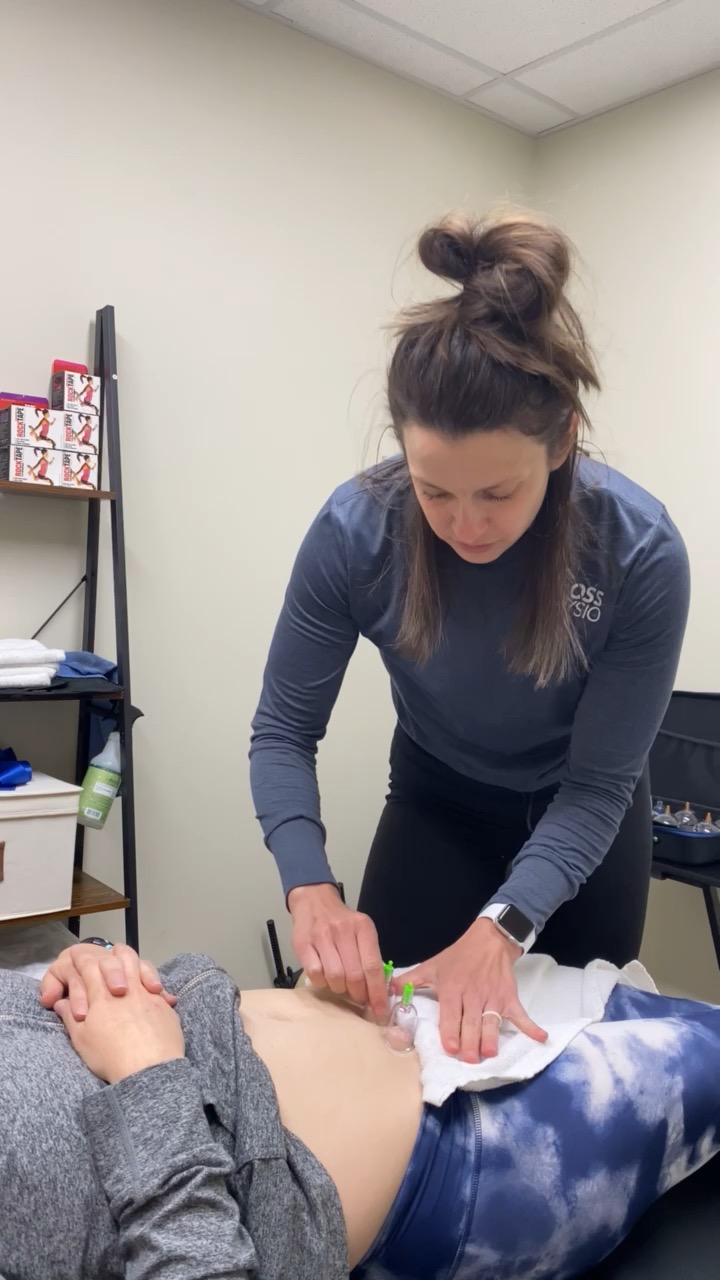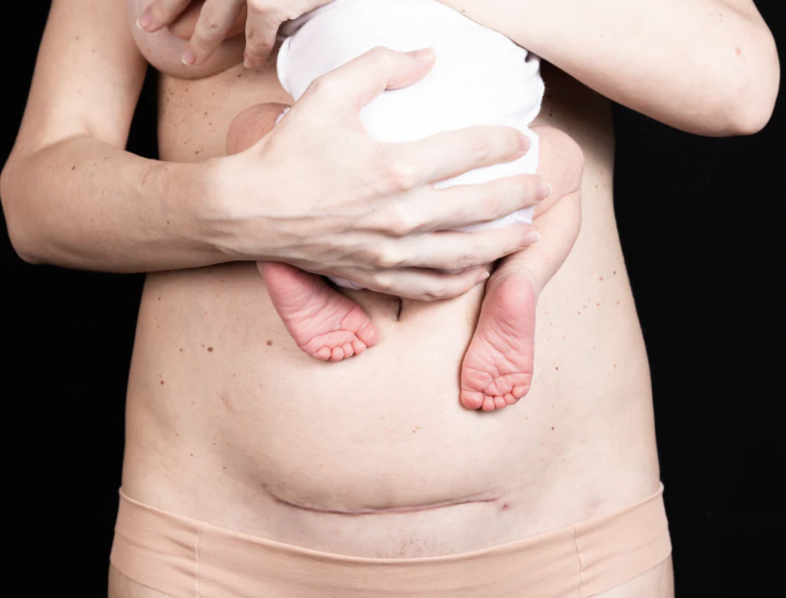What is a Cesarean Section?
A cesarean section (commonly called c-section) is a surgical procedure in which an OB creates an incision near the pubic bone to remove the baby. During the procedure, the OB cuts through 7 layers of tissue:
- Skin.
- Subcutaneous fat.
- Fascia.
- Muscle.
- Peritoneum.
- Uterus
- Amniotic Sac.
What does c-section recovery look like?
After a c-section, most women are advised to avoid soaking the incision, limit driving, avoid lifting anything heavier than the baby, and limit strenuous activity for 6 weeks. Simple activities like getting into and out of bed, walking, and laying flat can be challenging and potentially painful after a c-section. Back pain, constipation, and scar sensitivity/discomfort can also be common after a c-section.
Early recovery tips:
- Walk often-this can be simple 3-5 minute walks throughout the day
- This helps with blood flow, stimulates bowel movement, helps with stiffness/pain, and can help with mood
- Perform a “log roll” to get into/out of bed for less strain on the incision
- Use a pillow over the incision while nursing/feeding baby or try a side lying position for nursing to limit discomfort
- Perform scar desensitization
- Use a tissue to gently sweep or make circles on the skin AROUND the incision. Avoid the incision for the first 6 weeks.
- Use a squatty potty or step stool and breathe during bowel movements
- Try not to bear down and hold your breath when pooping. This will make it more difficult to go and can be painful for the abdomen and incision
- Gently stretch the low back/abdomen
- Cat-cows
- Laying flat
- Hooklying trunk rotation
- See a Pelvic Health PT
- Pelvic Health PTs can assess the incision, pelvic floor, lumbar spine, hips, and more to aid in optimal recovery.
Later recovery tips: Pelvic health PTs are a great resource during this phase!
- Strengthen the abdominal muscles
- Scar mobilization
- after 6 weeks or once the incision is well healed, direct scar mobilization can begin
- This can be done in a number of ways including cupping and dry needling with a PT
- Gradually increase intensity of exercise to return to baseline activity levels

Cupping for scar mobilization
